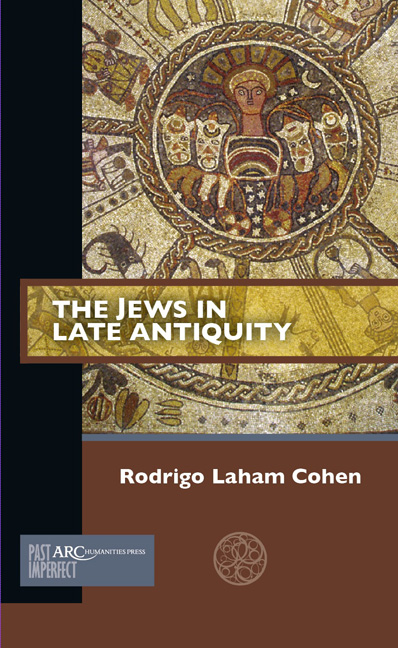Chapter 1 - The Problem of Sources
Published online by Cambridge University Press: 28 January 2021
Summary
The reconstruction of Jewish life in the past should comprise the analysis of written and archaeological sources. Certainly, Jewish texts are essential to understanding intracommunal dynamics. However, Jewish voices have not always survived. As we will see, this is the case with Jewish communities in Europe and Africa during late antiquity. In contrast, there was a prolific production of Jewish writings in Palestine and Babylonia. Rabbinical Judaism—a new Judaism—created the Mishnah, the Tosefta, the Jerusalem Talmud (Yerushalmi), and the Babylonian Talmud (Bavli), among other texts. Nevertheless, rabbinical writings are not only difficult to analyze but also problematic to date as they include oral traditions. In addition, the Talmud's ahistorical, performative, and legal nature complicates our understanding of Jewish history.
We can improve our knowledge of Jews by turning to a different type of evidence. First of all, there are texts referring to Jews written by other groups. Pagan and Christian texts—used carefully—can illuminate interaction among communities in the period, and even aspects of Jewish customs. Second, Jewish epigraphy—mainly epitaphs—offers brief but firsthand information about Jewish geography, languages, ideas, and traditions, among other features. Finally, Jewish archaeological remains—chiefly synagogues and cemeteries—help us to hypothesize about architectural patterns, liturgy, communal life, and other religious and nonreligious aspects. Other artifacts, such as seals, bowls, or talismans are also useful.
Silences in the West
Flavius Josephus died ca. 100 CE. There is a hiatus of almost 800 years after his death until we find another text written by Jews in Europe. Sefer Josippon is difficult to date, but it was written in southern Italy, probably between the ninth and tenth centuries. Additionally, Shabbethai Donnolo wrote on medicine, astrology, and religion—also in southern Italy—in the midtenth century. While Josephus—born in the Land of Israel—wrote in Greek, D onnolo—born in Italy—wrote in Hebrew. Jews were different: late antiquity had changed them.
There are only three European late ancient texts, the Jewish authorship and dating of which are controversial: the Collatio legum Mosaicarum et Romanarum, the Epistola Anne ad Senecam, and the Liber Antiquitatum Biblicarum. All are anonymous and they have no clear dating or geographical references.
- Type
- Chapter
- Information
- The Jews in Late Antiquity , pp. 4 - 12Publisher: Amsterdam University PressPrint publication year: 2018



